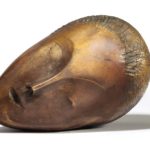WASHINGTON, D.C.- Researchers at the Smithsonian Conservation Biology Institute and partnering organizations will build a frozen repository of Great Barrier Reef coral sperm and embryonic cells. Genetic banks composed of frozen biomaterials hold strong promise for basic and applied research and conservation of species and genetic variation. Because the banked cells are alive, researchers can thaw the frozen material one, 50 or, in theory, even 1,000 years from now to help restore a species or diversify a population. Done properly over time, samples of frozen material can be reared and placed back into ecosystems to infuse new genes into natural populations, thereby helping to enhance the health and viability of wild stocks. “It is crucial that we begin ex situ conservation on coral reefs while their genetic diversity is still high,” said Mary Hagedorn, a marine biologist at SCBI. “Although we
Smithsonian Conservation Biology Institute to Help Create Frozen Repository for the Great Barrier Reef
Back To Top







